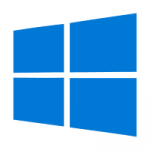 Another month, another load of patches from Microsoft.
Another month, another load of patches from Microsoft.
This month we have seventy-one bulletins and corresponding updates. One hundred and twenty-six vulnerabilities are addressed in all, affecting .NET, Internet Explorer 9 and 11, Edge, Office, SharePoint, Visual Studio, OneDrive, Skype, Windows, and Windows Defender. Nineteen of the vulnerabilities are flagged as having Critical severity.
As usual, you can find all the details in Microsoft’s Security Update Guide.
Those of you running Windows 10 know the drill: depending on which version of Windows 10 you’re running, you can delay installation of updates for a while, but not indefinitely. On Windows 8.1 computers, Windows Update is still the best way to install updates. Windows 7 users don’t have an official way to obtain updates for that O/S, despite the fact that Microsoft continues to develop them.
Update 2020Jul17: Again with this crap, Microsoft? One of the updates from this batch caused Outlook 2016 to crash on starting for users worldwide. This affected one of my clients, and affected critical business operations. A fix posted by someone other than Microsoft allowed Outlook to run, but killed the ability to print. Linux never looked so good.
You will now use Microsoft Edge!
On a related note, you may have noticed that Microsoft is pushing its new Chromium-based Edge browser to all Windows computers. This is happening not only on Windows 10 computers, but also those running Windows 8.1 and even 7. The new Edge cannot be removed in the usual way once it’s installed. This is causing consternation for many users, as Edge seems to take over once installed, forcing the user to make certain choices before the desktop can even be accessed. Isn’t this the kind of behaviour that got Microsoft in trouble in the 1990s?
The Verge has additional details. In case you were thinking about switching to Edge, you should be aware that a recent study by Yandex ranked Edge last in terms of privacy.
 boot13
boot13 With Windows 10, Microsoft shifted a lot of their testing to users, through the
With Windows 10, Microsoft shifted a lot of their testing to users, through the  Adobe once again tags along this month, with new versions of Reader and Acrobat. Most people use the free version of Reader, officially known as Acrobat Reader DC. The new version,
Adobe once again tags along this month, with new versions of Reader and Acrobat. Most people use the free version of Reader, officially known as Acrobat Reader DC. The new version,  Happy Patch Tuesday! Today’s gifts from the always-generous folks at Microsoft include forty-two updates, addressing one hundred and fifteen security bugs in Internet Explorer (9 and 11), Edge (the original version, not the one built on Chromium), Office (2010, 2016, and 2019), Windows (7, 8.1, and 10), and Windows Server.
Happy Patch Tuesday! Today’s gifts from the always-generous folks at Microsoft include forty-two updates, addressing one hundred and fifteen security bugs in Internet Explorer (9 and 11), Edge (the original version, not the one built on Chromium), Office (2010, 2016, and 2019), Windows (7, 8.1, and 10), and Windows Server. The hits just keep on coming for Microsoft. I suppose it’s inevitable that a company as large as Microsoft will make mistakes, but when their products reach into our lives as thoroughly as Microsoft’s, those mistakes can lead to major disasters.
The hits just keep on coming for Microsoft. I suppose it’s inevitable that a company as large as Microsoft will make mistakes, but when their products reach into our lives as thoroughly as Microsoft’s, those mistakes can lead to major disasters.